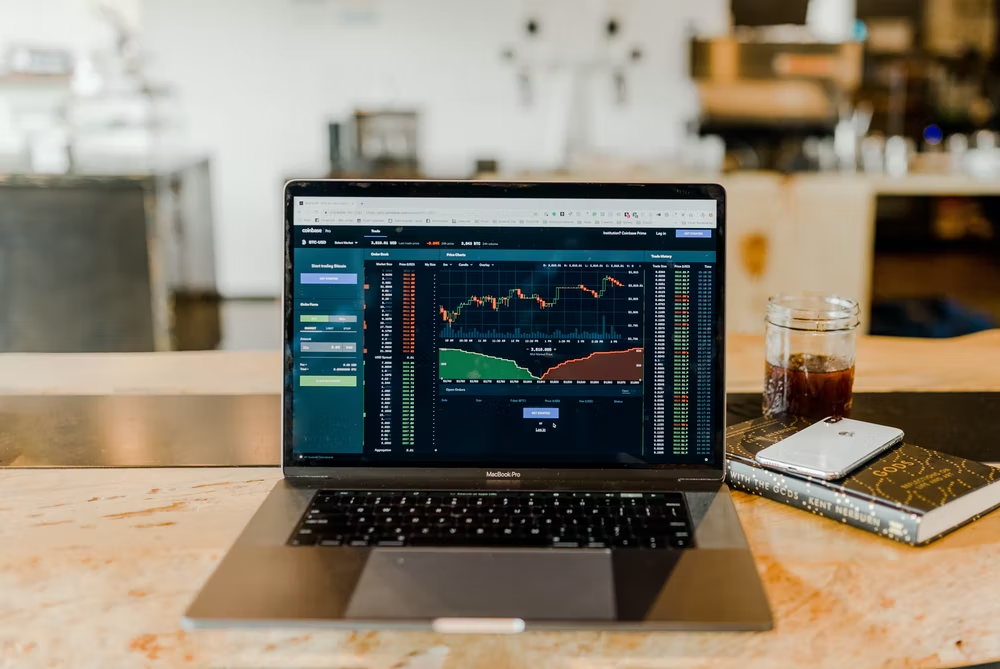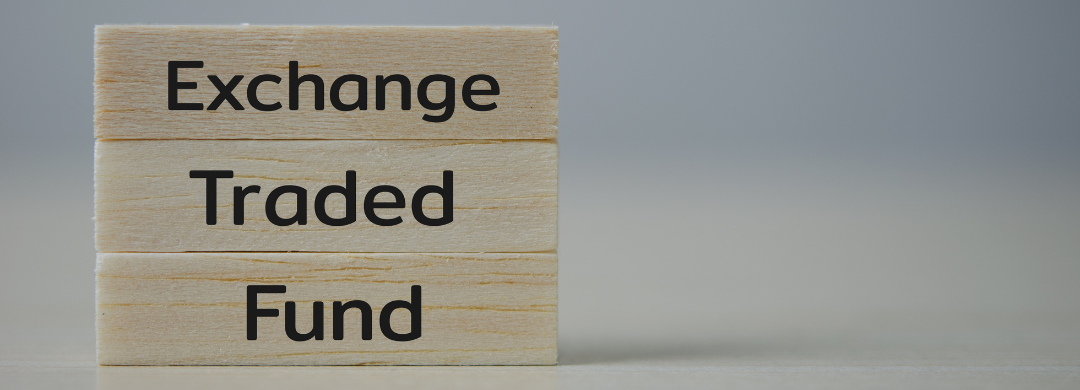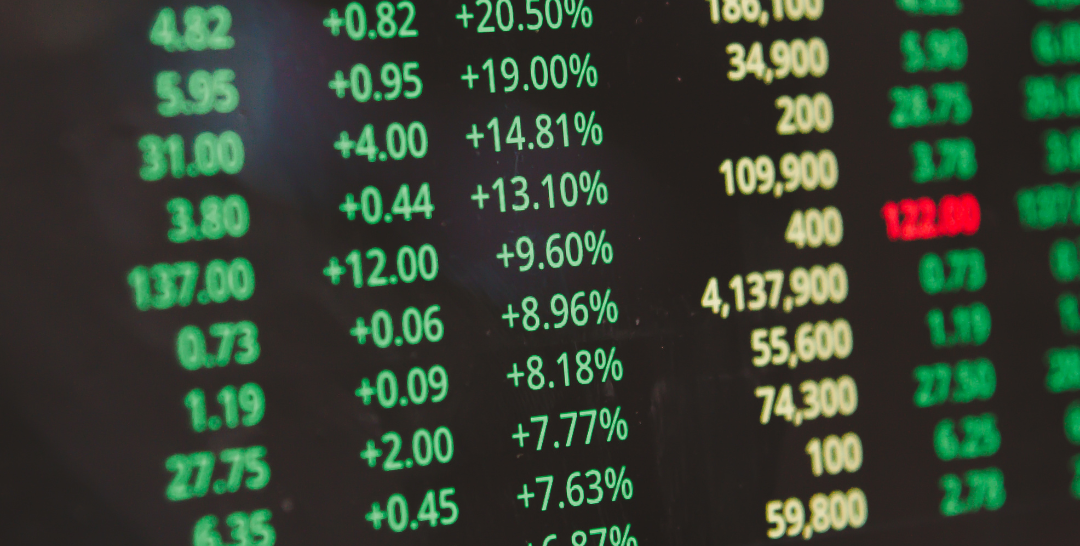Stock Exchange-Traded Fund (ETF)
An open-end fund with variable fund shares listed and traded on the exchange
Exchange Traded Fund is an open-end fund with variable fund shares listed and traded on the exchange.

An exchange-traded open-end index fund is a special type of open-end fund which combines the operational characteristics of closed-end funds and open-end funds.
Investors can either apply for or redeem fund shares from the fund management company, and at the same time, Closed-end funds buy and sell exchange-traded fund shares at market prices in the same way as in the secondary market.
However, subscription and redemption must be exchanged for a basket of stocks for fund shares or a fund share.
Due to the simultaneous existence of secondary market transactions and purchase and redemption mechanisms, investors can carry out arbitrage transactions when there is a price difference between the ETF market price and the net value of the fund units.
The existence of the arbitrage mechanism allows this type of fund to avoid the common discount problem of closed-end funds.
According to the different investment methods, ETFs can be divided into an index and actively managed funds. The vast majority of exchange-traded funds are index funds.
An ETF index fund represents the ownership of a basket of stocks. It refers to an index fund traded on the stock exchange like stocks. Its trading price and the net value of fund shares are consistent with the tracked index.

Therefore, when an investor buys and sells an exchange-traded fund, it is equivalent to buying and selling the index it tracks and can obtain the same return as the index.
It usually adopts a completely passive management method, aiming to fit an index, and has the characteristics of both stocks and index funds.
Due to the existence of secondary market transactions and subscription and redemption mechanisms, investors can carry out arbitrage transactions when there is a price difference between the ETF secondary market transaction price and the net value of the fund unit.
Stock Exchange-traded funds
The exchange displays IOPV (net value valuation, Indicative Optimized Portfolio Value) every 15 seconds for exchange-traded funds. This IOPV instantly reflects the changes in the fund's net value brought about by the ups and downs of the index.
ETF combines the trading characteristics of closed-end and open-end funds in terms of trading methods.

It can be traded on exchanges and subscribed and redeemed. There are two ways to buy (subscribe) fund shares, one is cash, and the other is to use a basket of stocks. But investors get a basket of shares instead of cash when selling or redeeming.
The most significant role of an exchange-traded fund is that the investors can use the characteristics of index futures and commodity futures of this financial product to carry out arbitrage operations, which will help increase the stock market's trading volume.
ETF was first produced in Canada, and its development and maturity are mainly in the United States.
Taking the United States as an example, from the end of 1993 to the end of 2003, the assets of exchange-traded funds in the United States increased from $464 million to $150.983 billion, which is equivalent to a 324-fold increase.
As of the end of June 2004, the total assets of ETF products worldwide reached US$246.4 billion, covering all major securities markets in the world. It is one of the fastest-growing financial products in the past ten years and has become a popular investment tool.
Characteristics
These types of funds have a few characteristics that can distinguish them from other types of funds. In the following section, we will introduce you to the characteristics of exchange-traded funds.
-
Diversify and reduce investment risk
-
Features of both, stock and index funds
-
Combines the advantages of closed-end and open-end funds
-
Low transaction costs
-
high transparency
-
Increase market hedging tools

1. Diversify and reduce investment risk
Passive investment portfolios usually contain more underlying assets than general active investment portfolios.
The increase in the number of underlying assets can reduce the impact of fluctuations in a single underlying on the overall investment portfolio. At the same time, the different effects of the different underlying assets on market risk can reduce investment portfolio fluctuations.
2. Features of both, stock and index funds
-
For investors, ETFs can also be bought and sold on the secondary market after being split into smaller trading units, just like stocks.
-
If you invest in index funds, you will make money, and investors will no longer have to study stocks and worry about stepping on landmine stocks.

3. Combines the advantages of closed-end and open-end funds
Exchange-traded funds, like closed-end funds, can be traded on exchanges in small "units."
Similar to open-end funds, ETFs allow investors to subscribe and redeem continuously. Still, when exchange-traded funds are redeemed, investors get a basket of stocks instead of cash, and the subscription and redemption are only allowed after reaching a certain scale.
Compared with closed-end funds, exchange-traded funds are similar in that they are all listed on exchanges, just like stocks, and can be traded anytime during the day.
The differences are:
-
Exchange-traded funds are more transparent.
-
Since investors can subscribe/redeem continuously, the frequency of requiring fund managers to announce NAV and investment portfolios has been accelerated accordingly.
-
Not much discount/premium
-
Due to the existence of a continuous subscription/redemption mechanism, theoretically, there will not be much discount/premium between the net value and market price of an ETF.
4. Low transaction costs
Indexed investments tend to have low management fees and low transaction costs. When compared to other funds.

The manager will only adjust the investment portfolio according to the changes in the index components. As a result, there is no need to pay investment research and analysis fees, so lower management fees can be charged.
On the other hand, index investment tends to hold the purchased securities for a long time.
And when compared with active management, which must pay higher transaction costs due to active trading and high turnover rate, index investment does not actively adjust the investment portfolio, the turnover rate is low, and transaction costs are naturally reduced.

5. High transparency
The exchange-traded fund adopts passive management and fully replicates the index's constituent stocks as the fund's investment portfolio and investment rate of return.
The fund's shareholding is quite transparent. As a result, it is easier for investors to understand the characteristics of the investment portfolio and fully grasp its status of the investment portfolio.
In addition, the index value and the estimated net value of the fund are updated every 15 seconds during the intraday period for investors' reference so that investors can keep abreast of the price changes at any time and trade at a price close to the net value of the fund at any time.
Neither closed-end nor open-end funds can provide the convenience and transparency of ETF transactions.
6. Increase market hedging tools
Since this type of fund's commodities can be regarded as a kind of index, in line with the commodity characteristics of the exchange-traded fund itself, which can be operated in both long and short positions.
Suppose institutional investors have stocks in their hands, but they look bad on the stock market's performance. In that case, they can use securities lending to sell them an ETF to do the reverse operation to reduce the number of spot losses on hand.
For the overall market, the birth of exchange-traded funds has diversified financial investment channels and increased the short-selling channels in the market.

For example, in the past, when institutional investors operated funds, they could only avoid risks by reducing their positions.
After the launch of futures, although the short-selling channel was added, investors had to face monthly position closing and transaction costs when they used futures as a long-term hedging tool.
And the issue of the price difference, using an exchange-traded fund as a hedging tool can reduce the risk of stock positions and eliminate the need to sell stocks in the spot market, thus providing investors with more diversified choices.

ETF and Open-ended funds
Compared with open-end funds, exchange-traded funds have two advantages:
-
First, exchange-traded funds are listed on the exchange and can be traded at any time during the day, which is convenient for trading.
Generally, open-end funds can only be opened once a day, and investors have only one trading opportunity per day (subscription and redemption).
-
Second, when exchange-traded funds are redeemed, a basket of stocks is delivered, which does not need to retain cash, which is convenient for managers to operate and can improve the fund's investment potential management efficiency.

Open-end funds often need to retain a certain amount of cash for redemption. When investors of open-end funds redeem fund shares, they often force fund managers to constantly adjust their investment portfolios.
The resulting taxes and losses of some investment opportunities are caused by those long-term investors who didn't call for redemption.
This mechanism can ensure that when some exchange-traded fund investors request redemption, it will not have much impact on long-term investors of the exchange-traded fund.
LOF and ETF
Listed open-end funds (LOFs) and exchange-traded funds (ETFs) are concepts that can be easily confused with one another.
The reason is that they all have the characteristics that open-end funds can be redeemed, and shares can be traded on the market.
In fact, there is a fundamental difference between the two Exchange-traded funds refers to funds that can be traded on an exchange. ETFs are often completely passively managed with the intention of tracking an index.
It offers investors two trading options:
- Exchange trading,
- Subscription and redemption all at once.
On the one hand, investors can buy and sell ETFs on the exchange just like closed-end funds and short-sell and engage in margin trading just like they would with stocks.

On the other hand, like open-end funds, investors can subscribe to and redeem exchange-traded funds, but when subscribed and redeemed, exchange-traded funds and investors exchange fund shares and A "basket" of stocks. ETFs have the characteristics of tax advantages, cost advantages, and flexible trading.
LOF is an innovation of open-end fund trading methods. It provides technical means for "sealing and opening."
For closed-end funds, LOF is a solution that inherits the characteristics of closed-end funds and increases the exit methods of investors.
For closed-end funds, the use of LOF to complete closed-end open-end is a reasonable transformation of fund transaction methods and an open-end fund.
The fund's succession was reasonable. On the other hand, the floor trading of LOF lessens the pressure of redemption. Additionally, LOF broadens fund companies' sales channels and relieves banks' sales bottleneck.

Both LOF and an ETF offers investors the chance to engage in arbitrage, and both have over-the-counter and on-site trading options.
The additional trading flexibility provided by floor trading makes LOF different from current open-ended funds.




or Want to Sign up with your social account?